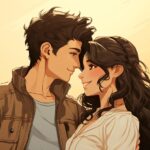Making healthier food choices can make your body immune to different types of seasonal and chronic diseases. Adding a high-protein vegan diet to your food habits can change your lifestyle for the better. At the current times, especially in this post-COVID situation, people are leaning more and more towards developing a healthy lifestyle with proper food habits. With time, health concerns are also increasing due to work stress daily life pressure and other crucial matters. In this situation, it is important to focus on our well-being and deal with the concerning health issues. Adding high-protein vegan food to your diet can be a good start. Let’s check out how beneficial vegan food can be for our health.
Health Benefits of High-Protein Vegan Foods
- Metabolic health improvement: A survey from 2019 showed that about 88% of people in the United States were suffering from poor metabolic health. The number is indeed concerning. Consuming high-protein Vegan food daily can improve the metabolism system and promote better glycemic control. This can also reduce the chance of Type 2 Diabetes.
- Helps to repair and grow muscle: If you are an athlete, fitness enthusiast or simply someone interested in keeping a fit body, consuming high-protein food is a must. Consuming high-protein vegan food assists in your muscle repair and growth, It keeps you healthy and fit without causing any kind of metabolic issue.
- Helps in weight management: keeping your weight in check is an important factor at the current times. An increasing number of people are suffering from obesity all around the world, especially in the United States. Child obesity in the US is becoming concerning. Plant protein is low in calories and high in energy. Including a high-protein plant-based food diet can help you in weight management.
- Lower risk of diseases: Food habit plays a crucial role in causing some specific diseases. Research shows that a high-protein plant-based diet can reduce the chances of coronary heart diseases and cancers. Daily consumption of plant-based food can also lower the risk of chronic diseases.
- Improves nutrient intake: High-protein vegan foods include different types of legumes, nuts, seeds, fruits and vegetables that are high in vitamins, minerals and fibre. These nutrients improve your health and ensure your well-being in the long run. So, if you are trying to have a proper diet, choose your protein carefully.
How to Add High-Protein to Your Vegan Diet
Creating a high-protein vegan diet can be complicated sometimes. Here are some tips that you can use to develop the habit.
- Breakfast is the most important part of your diet. Add protein-rich smoothies from fruits and vegetables or protein powder to your breakfast. You can also add tofu scrambles along with the smoothies.
- Make sure to add protein-rich vegan foods to your every meal. For example, salad for breakfast, lentils for lunch and tofu for dinner. The choice is yours.
- Instead of unhealthy and oily snacks choose healthier options like nuts and seeds. It will keep you full for a long time.










